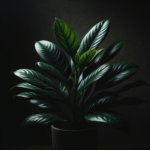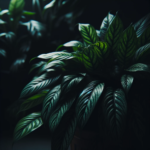Indoor gardening can be a challenge, especially in spaces lacking natural sunlight. However, certain plants have adapted to thrive under such conditions. In this post, we’ll explore five low light plants that are perfect for indoor settings with poor natural sunlight, explaining the scientific reasoning behind their adaptability.
1. Zamioculcas Zamiifolia (ZZ Plant)

The ZZ Plant is a champion of low-light conditions. Its thick, waxy leaves are adapted to store water, enabling it to survive in shadowed areas where light is scarce. Its rhizomes (underground stems) also store nutrients, making it a resilient choice for darker spaces.
2. Sansevieria (Snake Plant)

Known for its air-purifying qualities, the Snake Plant is another low light plant superstar. It can perform photosynthesis under minimal light due to its efficient Crassulacean Acid Metabolism (CAM), which allows it to absorb light during the day and process it at night.
3. Aglaonema (Chinese Evergreen)

The Chinese Evergreen thrives in low-light due to its broad leaves, which have a larger surface area to absorb what little light is available. Its natural habitat under the canopy of tropical forests has made it adept at surviving with minimal light.
4. Epipremnum Aureum (Golden Pothos)

The Golden Pothos, with its heart-shaped leaves, is a popular choice for low-light areas. It’s capable of photosynthesis under fluorescent lighting, making it ideal for office spaces and dimly lit rooms.
5. Aspidistra Elatior (Cast Iron Plant)

The Cast Iron Plant is renowned for its tolerance to poor light conditions. It grows slowly, which means it requires less energy and can survive in low-light environments longer than faster-growing plants.
Conclusion
These five plants not only bring life to dimly lit corners but also improve air quality and add a touch of nature to indoor spaces. Whether you’re a seasoned indoor gardener or a beginner, these adaptable plants are a perfect addition to your home or office.
